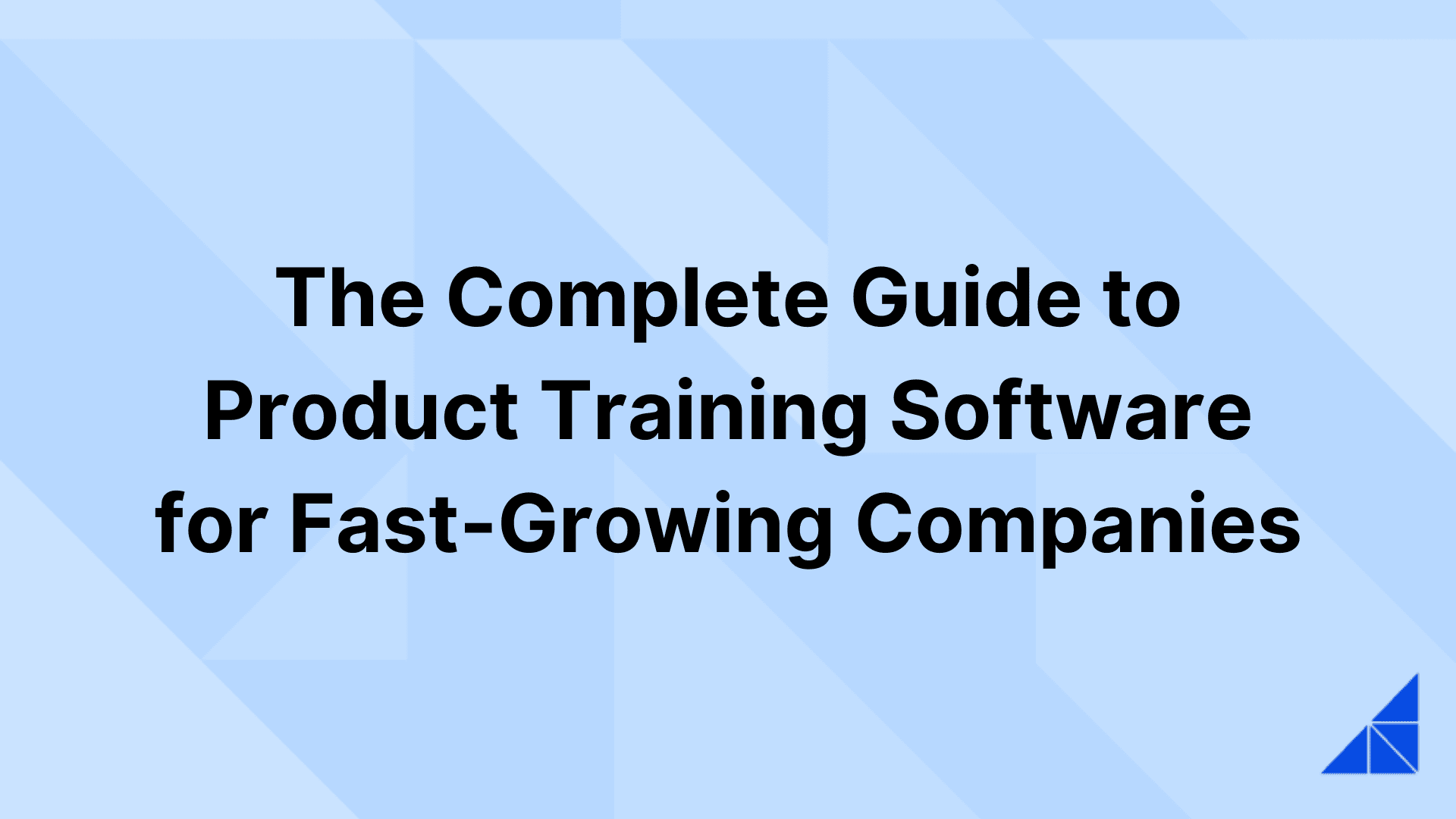Customer Education
Partner Training: How to Build a Scalable Program
May 6, 2025

Samantha Fitzgerald
Partner programs drive serious revenue—64% of companies rely heavily on them. The challenge? 53% of partners say vendor training just doesn’t meet their needs. In this guide, we’ll show you how to build a high-impact, AI-powered partner training program that boosts productivity, strengthens alignment, and grows your bottom line.
Step 1: Plan Your Partner Training Program
Channel programs are expanding fast, but many leaders aren’t ready to keep up. In fact, 65% of CMOs say they’re not equipped to manage that growth. The first step? Get strategic.
Set Clear Business Goals
Only 6% of leaders call partner training their top challenge, but it’s one of the biggest levers for performance gains. Tie your training goals to clear KPIs like:
Revenue Impact: Target sales growth through trained partners.
Customer Satisfaction: Improve CSAT by upskilling on support and service.
Partner Productivity: Track how quickly partners ramp up and hit performance benchmarks.
Identify Partner Needs
Partner onboarding can be a major pain point, and 21% of leaders cite it as a top concern. Build your program around the skills partners actually need to succeed. Here’s how to prioritize content based on partner needs and potential business outcomes:
Training Need | Business Impact | Priority |
Product Knowledge | Faster deal closures | High |
Customer Support Skills | Fewer support tickets | High |
Sales Techniques | Higher conversion rates | Medium |
Corporate Culture | Stronger brand alignment | Medium |
Map Out Resources and Timelines
More than half of partners say vendor content falls short. To deliver standout training, plan carefully:
Content Development Timeline: Allow time for drafting, feedback, and updates.
Technology Infrastructure: Choose a platform that integrates easily and offers on-demand access.
Certification Requirements: Define clear paths and use automation to track progress.
A solid training plan tied to business goals sets the stage for long-term partner success and measurable impact.
Step 2: Align Content Types to Learning Goals
Use a mix of formats to keep training engaging and actionable:
Content Type | Best Use Case | Key Benefits |
Interactive Guides | Product Training | Hands-on learning and instant feedback |
Video Content | Demonstrations | Visual learning and consistent messaging |
Microlearning | Quick Updates | Flexible learning, better retention |
Assessments | Skill Verification | Track progress and readiness |
Using the right content formats ensures your training is not just consumed, but retained and applied.
Step 3: Deliver Training That Fits Partner Needs
Once your content is ready, deliver it through the right format and platform. Here are some options to consider:
Self-Paced Learning: Let partners move at their own speed, with reminders and progress tracking.
Blended Learning: Combine live sessions with digital modules. Only 35% of companies offer effective coaching for partner reps, so blending live and digital learning can be a real differentiator.
Certification Paths: Validate skills and keep partners motivated. With 24% of companies saying it takes over a year for partners to be productive, this can accelerate ramp time.
Matching delivery methods to partner preferences improves engagement, accelerates ramp time, and drives performance.
Step 4: Launch with a Branded LMS
Now it’s time to bring everything to life. A branded, easy-to-navigate LMS makes a big impact on engagement.
Key LMS Setup Tips:
Branding: Customize your platform with your domain and visuals.
User Provisioning: Use tools like SSO and HRIS integrations to streamline access.
Learning Paths: Build role-specific tracks and certifications.
Automation: Auto-assign courses, set reminders, and track completion.
Support Materials: Offer searchable documentation and mobile-friendly access.
For example, Quantum Metric launched Quantum Metric University (QMU) using WorkRamp's LMS. They developed over 50 training modules and awarded more than 1,000 certifications in the first year, effectively scaling their training for thousands of global customers and partners. A well-branded LMS not only enhances user experience but also scales your training efforts efficiently.
Step 5: Measure, Improve, and Scale
Training isn’t “set it and forget it.” Once live, you’ll want to continuously gather feedback and improve. With 53% of partners rating vendor content as mediocre, their input is essential. Consider using features like:
Surveys for quick feedback
1:1 Interviews for deeper insights
Analytics to track module engagement and drop-off points
Key Metrics to Watch
Metric | What to Watch For | Next Steps |
Learning Progress | Completion and retention | Fill content gaps |
Partner Engagement | Time spent, quiz scores | Improve format or delivery timing |
Business Impact | Sales or support metrics | Show ROI and justify program expansion |
Ongoing measurement and feedback turn training into a dynamic program that evolves with your partners’ needs.
Next Steps: Make Partner Training a Competitive Advantage
A well-executed partner training program isn’t just about education, it’s a strategic advantage. When it’s aligned to your goals, personalized with AI, and easy to manage, you empower partners to sell faster, deliver better experiences, and champion your brand at every turn. Ready to turn training into a growth engine? Let’s talk about how WorkRamp can help.




